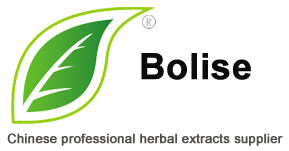ハーブ
あなたが使用します
Herbs have a variety of uses including culinary, medicinal, or in some cases even spiritual usage.ハーブには、料理、薬用、場合によっては精神的な使用法など、さまざまな用途があります。 General usage differs between culinary herbs and medicinal herbs.一般的な使用法は、料理用ハーブと薬用ハーブで異なります。 In medicinal or spiritual use any of the parts of the plant might be considered "herbs", including leaves, roots, flowers, seeds, resin, root bark, inner bark (cambium), berries and sometimes the pericarp or other portions of the plant.薬用または精神的な使用では、葉、根、花、種子、樹脂、根の樹皮、内側の樹皮(カンビウム)、果実、時には果皮または植物の他の部分を含む、植物の任意の部分が「ハーブ」と見なされる場合があります。
料理用ハーブ
「ハーブ」という用語の料理での使用は、通常、植物の緑豊かな緑の部分からのハーブと、種子、果実、樹皮、根、果実、さらには時々乾燥した葉を含む植物の他の部分からのスパイスを区別します。 Culinary herbs are distinguished from vegetables in that, like spices, they are used in small amounts and provide flavor rather than substance to food.料理用のハーブは、スパイスのように少量使用され、食品に物質ではなく風味を与えるという点で野菜とは異なります。
Some culinary herbs are shrubs (such as rosemary, Rosmarinus officinalis), or trees (such as bay laurel, Laurus nobilis) – this contrasts with botanical herbs, which by definition cannot be woody plants.いくつかの料理用ハーブは、低木(ローズマリー、Rosmarinus officinalisなど)または樹木(ゲッケイジュ、Laurus nobilisなど)です。これは、定義上木質植物にはなり得ない植物性ハーブとは対照的です。 Some plants are used as both a spice and an herb, such as dill seed and dill weed or coriander seeds and coriander leaves.ディルシードとディルウィード、コリアンダーシードとコリアンダーの葉など、いくつかの植物はスパイスとハーブの両方として使用されます。
薬草
Plants contain phytochemicals that have effects on the body.植物には、体に影響を与える植物化学物質が含まれています。 There may be some effects even when consumed in the small levels that typify culinary "spicing", and some herbs are toxic in larger quantities.料理の「スパイス」を代表する少量で摂取した場合でも、いくつかの影響がある可能性があり、一部のハーブは大量に毒性があります。 For instance, some types of herbal extract, such as the extract of St. John's-wort (Hypericum perforatum) or of kava (Piper methysticum) can be used for medical purposes to relieve depression and stress.たとえば、セントジョンズワート(Hypericum perforatum)やカバ(Piper methysticum)の抽出物など、一部の種類のハーブ抽出物は、うつ病やストレスを和らげるために医療目的で使用できます。 However, large amounts of these herbs may lead to poisoning, and should be used with caution.ただし、これらのハーブを大量に摂取すると中毒を引き起こす可能性があるため、注意して使用する必要があります。 One herb-like substance, called Shilajit, may actually help lower blood glucose levels which is especially important for those suffering from diabetes.シラジットと呼ばれるXNUMXつのハーブのような物質は、実際に血糖値を下げるのに役立つ可能性があります。これは、糖尿病に苦しむ人々にとって特に重要です。 Herbs have long been used as the basis of traditional Chinese herbal medicine, with usage dating as far back as the first century CE.ハーブは長い間伝統的な漢方薬の基礎として使用されており、その使用法は西暦XNUMX世紀までさかのぼります。
Some herbs are used not only for culinary and medicinal purposes, but also for recreational purposes;一部のハーブは、料理や薬用だけでなく、娯楽目的にも使用されます。 one such herb is cannabis.そのようなハーブのXNUMXつは大麻です。
宗教的なハーブ
Herbs are used in many religions – such as in Christianity (myrrh (Commiphora myrrha), ague root (Aletris farinosa) and frankincense (Boswellia spp)) and in the partially Christianized Anglo-Saxon pagan Nine Herbs Charm.ハーブは、キリスト教(ミルラ(Commiphora myrrha)、アグルート(Aletris farinosa)、フランキンセンス(Boswellia spp))、部分的にキリスト教化されたアングロサクソン異教徒の九つの薬草のチャームなど、多くの宗教で使用されています。 In Hinduism a form of Basil called Tulsi is worshipped as a goddess for its medicinal value since the Vedic times.ヒンドゥー教では、トゥルシーと呼ばれるバジルの形が、ヴェーダ時代からその薬効のある女神として崇拝されています。 Many Hindus have a Tulsi plant in front of their houses.多くのヒンズー教徒は彼らの家の前にトゥルシーの植物を持っています。

 アジアバイオ医薬品研究所
アジアバイオ医薬品研究所 ボリーゼ株式会社
ボリーゼ株式会社

